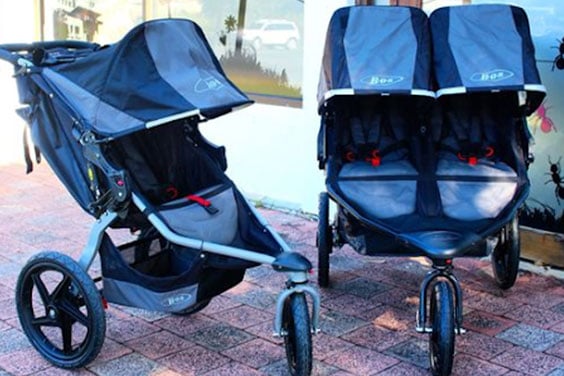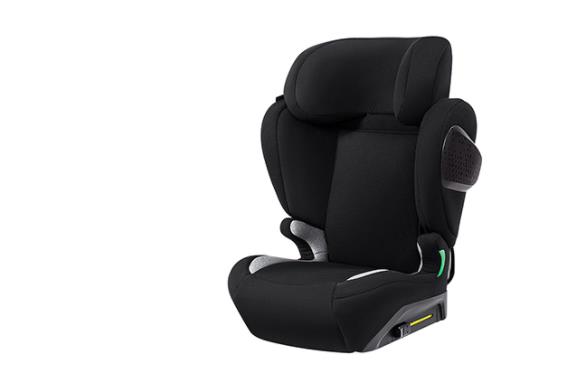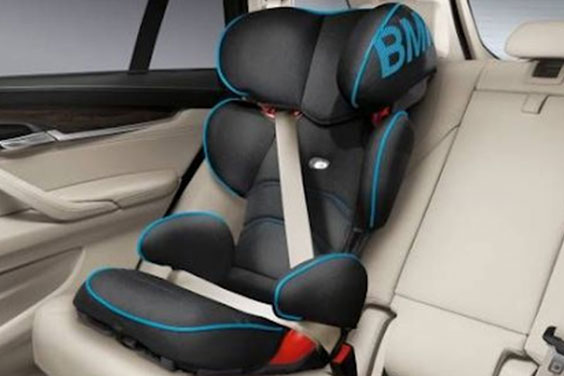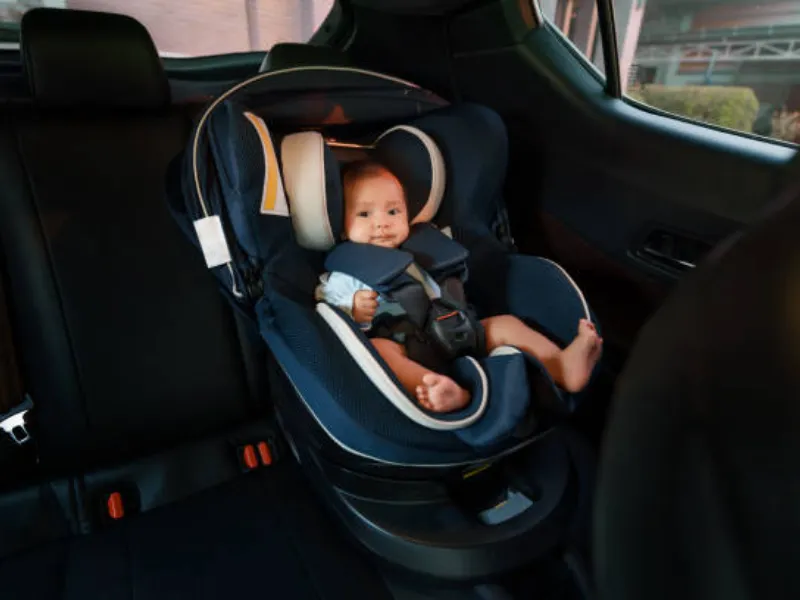Parenting is full of joyous moments and crucial choices, with one being the selection of a suitable infant seat restaurant high chairs for your child. A well-made highchair ensures the safety, comfort, and proper seating of the baby during meal times. When examining high chairs, the material of high chairs often becomes a significant factor as it affects multiple aspects, including the non toxic high chair part’s cleanliness, durability, aesthetics, and your child’s feeding health.
High chairs are primarily constructed from three materials – plastic, wood, and metal. Each of these materials offers its own set of merits and demerits. As parents, we want the best for our little ones, understanding these materials’ attributes paves the way to an informed choice. The choice of good material for booster seat and ergonomic high chair promises a safe and fruitful mealtime for both the baby and parents.
Understanding Different Materials of High Chairs: How to Choose the Right High Chair Material for My Baby
| Material | Advantages | Disadvantages |
|---|---|---|
| Plastic | Lightweight, easy to clean, adjustable, cost-effective, variety of designs | May lack durability, negative environmental impact, potential chemical exposure |
| Wood | Durable, stylish, sustainable, minimal use of harmful substances | Heavier, harder to clean, lack adjustability features, more expensive |
| Metal | Durable, modern design, lightweight yet stable, easy to clean, resistant to UV light and temperature | More expensive, less comfortable, prone to scratches and dents |
In the quest for the perfect high chair, you might find yourself asking – what is the best material for my baby’s high chair? The market today is abundant with high chairs made from various materials, including plastic high chairs, adjustable steps chair, wooden high chair, baby high chairs, and metal high chairs. Each of these materials has unique aspects that cater to your baby set specific requirements and preferences.
Plastic high chairs and table tops are often favored smaller babies, for practical cleaning and maintenance, making them a choice for many families. On the other hand, some may look for aesthetic appeal and long-term durability that wooden baby high chairs can provide. Yet, others might prefer the robustness and sleek look that metal high chairs bring to dining table.
The selection of the right material largely rests on factors like your living space, lifestyle, taste, and, of course, your child’s comfort. It becomes easier to make a decision when you evaluate and contrast these materials’ characteristics, pros, and cons.
Plastic High Chairs
Advantages
- Lightweight: Plastic high chairs are often lighter than their wooden counterparts, making them easier to move or transport.
- Easy to Clean: Plastic is a non-porous material, making it easy to wipe clean. The trays are often detachable and safe for dishwasher cleaning.
- Adjustable Features: Many plastic high chairs come with adjustable heights, seat recline options, and trays, allowing for customization as per your child’s need.
- Cost-Effective: Plastic high chairs are generally more affordable than wooden or metal ones.
- Variety of Designs and Colors: Plastic high chairs usually come in a wide range of colors and designs, offering a lot more choices for parents.
Inadequacies
- Durability: Plastic high chairs may not be as sturdy or long-lasting as wooden ones.
- Environmental Impact: Plastic is not biodegradable and is more harmful to the environment compared to wood.
- Stability: Plastic high chairs are lighter, which sometimes may cause tipping if a child leans or pushes off against something.
- Chemicals: Some plastic high chairs may contain harmful chemicals like BPA, Phthalates, PVC, etc.
Instructions for Use
- Assembly: Plastic high chairs often come disassembled and require you to follow the manufacturer’s instructions for assembly.
- Safety Harness: Always strap your child in with the included safety harness, typically a 3- or 5-point safety belt to secure them safely.
- Supervision: Never leave your child unsupervised while in the high chair. Always ensure the safety harness is secure, and the high chair is on a stable surface.
- Cleaning: After every use, clean the chair and tray thoroughly. Most plastic high chair trays are dishwasher-safe. For the chair, use mild soap and water for cleaning.
- Periodical Check: Regularly check for any loose screws or parts in the chair. Also, ensure the plastic has not cracked or warped, as this could pose a safety and integrity risk.
Wooden High Chairs
Advantages
- Durability: Wooden high chairs are robust and sturdy. They can withstand heavy use and often outlive their plastic counterparts.
- Stylish Design: Wooden high chairs often have a classic, timeless design. They can fit well into most home decors and are considered more aesthetically pleasing than plastic options.
- Sustainability: Wood is a renewable resource and is biodegradable, making wooden high chairs an environmentally-friendly option.
- Minimal use of Chemicals: Unlike plastic high chairs, wooden chairs often involve fewer harmful substances and chemical processes during production.
- Longevity: Wooden high chairs often have a high resale value and can sometimes even become family heirlooms.
Inadequacies
- Weight: Wooden high chairs tend to be heavier than plastic or metal ones. This makes them less portable and harder to move around.
- Cleaning: Since wood is porous, it can harbor bacteria. Therefore, wooden high chairs require diligent cleaning. Also, they may not endure abrasive cleaning as well as plastic chairs.
- Lack of Features: Many wooden high chairs lack the adjustability features found in modern plastic styles. They may not have height adjustments, reclining seats, or wheels.
- Cost: Wooden high chairs are often more expensive than their plastic counterparts.
Instructions for Use
- Assembly: Your wooden high chair may come disassembled. Carefully follow the manufacturer’s instructions for safe assembly.
- Safety Harness: Ensure your child is secured in the chair using the safety harness (usually a 3- or 5-point harness). This step is vital to prevent the child from slipping off the chair.
- Supervision: Never leave your child unattended when they’re in the high chair. Ensure they are safely strapped in and that the chair is stable before walking away.
- Cleaning: After every meal, clean the chair to prevent food particles from getting stuck in the crevices. Use a mild, non-abrasive detergent to clean the chair.
- Maintenance: Regularly check the chair for any loose screws or parts that could pose a safety risk. As wood may dry out, occasional oiling with a food-safe oil could help to maintain it.
- Avoid Excessive Sunlight and Water: Do not expose the chair to excessive sunlight as it may cause the wood to warp or crack. Also, avoid cleaning the chair with excessive water; use a damp cloth instead.
Metal High Chairs
Advantages
- Durability: Metal high chairs are often very sturdy and durable, making them a good long-term investment.
- Modern Design: Metal high chairs often feature minimalistic, modern designs that suit contemporary decor styles.
- Lightweight yet Stable: While lighter than wooden chairs, metal high chairs offer more stability than plastic high chairs because of the weight and strength of the metal.
- Non-Porous: Metal is a non-porous material, making it easy to clean and less likely to harbor bacteria.
- Hard Wearing: Metal high chairs are resistant to the effects of UV light and temperature, ensuring they don’t warp or fade over time.
Inadequacies
- Cost: Metal high chairs can be more expensive than both plastic and wooden counterparts.
- Comfort: Metal high chairs can be less comfortable than wooden or plastic chairs as they might not have any padding. They can also be cold to the touch.
- Potential for Scratches and Dents: If not handled properly, metal high chairs can get scratched or dented, affecting their aesthetic.
Instructions for Use
- Assembly: As with all high chairs, follow the manufacturer’s instructions for assembly. Ensure all screws and bolts are tight and the chair is stable.
- Safety Harness: Always use the safety harness to secure your child into the chair. This should be a 3- or 5-point harness that securely straps your child in.
- Supervision: Do not leave your child unattended in the high chair. Always ensure the safety straps are securely fastened and the chair is on a sturdy surface.
- Cleaning: Wipe down the chair and tray after each use. Most metal high chairs have a detachable tray which makes it easier to clean. Use a mild detergent and a damp cloth for cleaning.
- Inspection: Periodically inspect the high chair for any loose screws, bolts, or damaged parts. Replace or tighten as necessary.
- Protective Mat: Consider placing a protective mat under the high chair to prevent any potential damage to flooring from scratches.
Ensuring Safety: A Look at Toxicity in Materials of High Chairs
When it comes to caring for our children, safety without a doubt surfaces as the utmost priority. This concern permeates every aspect of parenting, extending to the selection of the products and items that our children will use on a daily basis, including high chairs. High chairs are instrumental in our children’s early years, being the platform that supports them during meal times and other seated activities.
The role that high chairs play in our children’s lives factors significantly into our purchasing decisions non toxic high chairs. One crucial criterion is the material from which the high chair seat is made. There are different types of high chairs available- plastic, wooden, and metal – each with their own advantages and disadvantages. However, irrespective of the material you choose, ensuring that the high chair is made from non-toxic materials is paramount.
For instance, if you’re considering a plastic high chair, make sure it is free from Polycyclic Aromatic Hydrocarbons (PAHs), BPA, and phthalates, which are known to cause health problems. When it comes to wooden high chairs, choose the ones that are coated or treated with non-toxic, child-safe finishes. This is because wood is often treated with heavy metals and chemicals to enhance its durability and resistance to insects or fungi. Metal high chairs should be free of lead-based paInt or any potentially toxic coatings.
Moreover, it’s not just about immediate safety but also about long-term health consequences. Prolonged exposure in small space to toxins, even in minimal amounts can cause serious health hazards later in life. This is why it’s essential to choose a high chair that not only meets the highest safety standards but also ensures your child is not exposed to any harmful substances.
Cleaning and Maintenance: How Materials of High Chairs Impact Them?
Mess at mealtime is inevitable when you have a baby around. The chosen high chair material plays a major role in determining how easy the cleaning and maintenance process of popular chairs will be. For instance, plastic and metal high chairs can simply be wiped clean with a damp cloth, making the cleaning process simpler and quicker. On the other hand, wooden baby high chairs may require a bit more effort to prevent stains from food residues and spills.
Eco-friendly Considerations: What Materials of High Chairs are Environmentally Friendly?
Parents today are more conscious than ever about the importance of selecting eco-friendly products. In the case of high chairs, you might lean towards wooden baby high chairs, particularly those made from sustainably sourced wood. Similarly, metal high chairs can be a great choice as most metals are highly recyclable. On the flip side, unless crafted from recycled or biodegradable plastic, plastic high chairs can raise environmental concerns due to their non-biodegradable nature.
Meeting Standards for Safety: Certification of Materials of High Chairs
When choosing a high chair for your child, safety should be your top priority. Manufacturers and importers of high chairs are mandated by federal law to meet the Safety Standard for High Chairs, 16 CFR part 1231, which includes additional requirements such as those by the Consumer Product Safety Improvement Act of 2008 (CPSIA). Every high chair must be tested for compliance by a Consumer Product Safety Commission (CPSC)-accepted third-party lab and come with a Children’s Product Certificate certifying their adherence to standards.
Additional requirements set by the Consumer Product Safety Improvement Act include restrictions on high chairs for surface coatings, lead content, small parts, testing and certification, registration cards, and tracking labels. Strict prohibitions on lead and phthalate content are in place to protect your children from potential harm caused by the presence of such harmful substances in high chair components.
High chairs must have a Children’s Product Certificate based on testing at a CPSC-accepted, third party lab, to confirm compliance with all the applicable children’s product safety rules. Furthermore, each manufacturer of a high chair must provide a postage-paid consumer registration form with each product, keep records of consumers who register their products with the manufacturer and add permanent markings to the front wheels.
(1) The manufacturer’s name and contact information
(2) The model name and number
(3) The date of manufacture on each such product
Notably, all high chairs must have a tracking label or other distinguishing permanent mark affixed. The labeling ensures that the manufacturer’s or private label’s name, the location and date of manufacture, and cohort information are available, such as a batch or run number, allowing immediate identification of the toddler or convertible high chair product’s origins if required.
Durability and Lifespan: What Role Does Material Play?
The durability of a high chair, its capacity to stand the test of time and rigorous use, and its potential to serve one child after another, is primarily tied to the material used in its construction.
Metal and wooden baby high chairs are typically praised for their remarkable resilience. These materials are naturally robust – wood has an inherent toughness, while metal is renowned for its substantial strength. The high chairs comprised of these materials are, therefore, renowned for their long-lasting potential. Families often see these high chairs as investments, knowing they can rely on their solid wood steadfast structure for years, thereby justifying the typically higher upfront cost of wooden furniture.
Plastic high chairs, on the other hand, offer their own kind of durability. They are generally sturdy enough for everyday use and tend to hold up well to the frequent cleaning required by feeding time spills and messes. Their lightweight design also makes them more likely to sustain less damage from falls or accidental knocks.
However, while they are perfectly adequate for commonly anticipated wear and tear, when it comes to harsh conditions or exceptional strain, plastic high chairs may fall short. These chairs may not withstand more intense challenges as effectively as their wooden or metal counterparts. Over time, prolonged use, exposure to sunlight, or rough handling might lead to weakening of the material or cause it to crack, chip or warp.
How Materials of High Chairs Influence Aesthetics and Design?
Materials play a significant role in dictating the aesthetics and design of high chairs. Wooden high chairs have a timeless appeal that can blend into any home interior effortlessly, while metal high and engineered wood top chairs offer a sleek, modern look. Plastic high chairs, on the other hand, can be available in a variety of vibrant hues, patterns wood finishes, and designs, making them more appealing and enticing for children.
The Impact of Materials of High Chairs on Comfort and Usability
Comfort is a crucial factor to consider when choosing a high chair, and the material plays a significant role in it. While all materials aim to provide maximum comfort, factors like the cold touch of metal, the hard surface of wood, or the softer but sometimes slippery sculpt of a plastic chair might be points of concern.
The Role of Materials of High Chairs in Portability and Storage
When it comes to portability and storage, plastic high chairs and metal high chairs often take the lead. They’re generally lighter and easier to move around. Some designs of other chairs also offer features that allow them to be folded or disassembled for easy cleaning and easier storage.
Cost Implications Based on Materials of High Chairs Selection
The price of wooden chair is an important factor in any buying decision buy a high chair. Plastic high chairs are usually the least expensive option, followed by metal chairs. Wooden high chairs, although long-lasting and aesthetically pleasing, could come at a higher price point.
Conclusion
In conclusion, picking between a plastic high chair, a wooden baby high chair, or a metal high chair boils down to personal choice, lifestyle, and values. Choose a toxic high chair that combines elements of safety, cleanliness, durability, aesthetics, and comfort—all within a budget that suits your and aligns with your environmental ethos. River Baby has a wide range of high chairs, there’s something for your family, the right high chair will fit seamlessly into your family and make mealtime a joy to own. By examining each material’s pros and cons, you can make an informed decision that caters to your specific needs without compromising safety, comfort, or style. After all, happy meal times contribute to a happy child, and, ultimately, a happy family.






